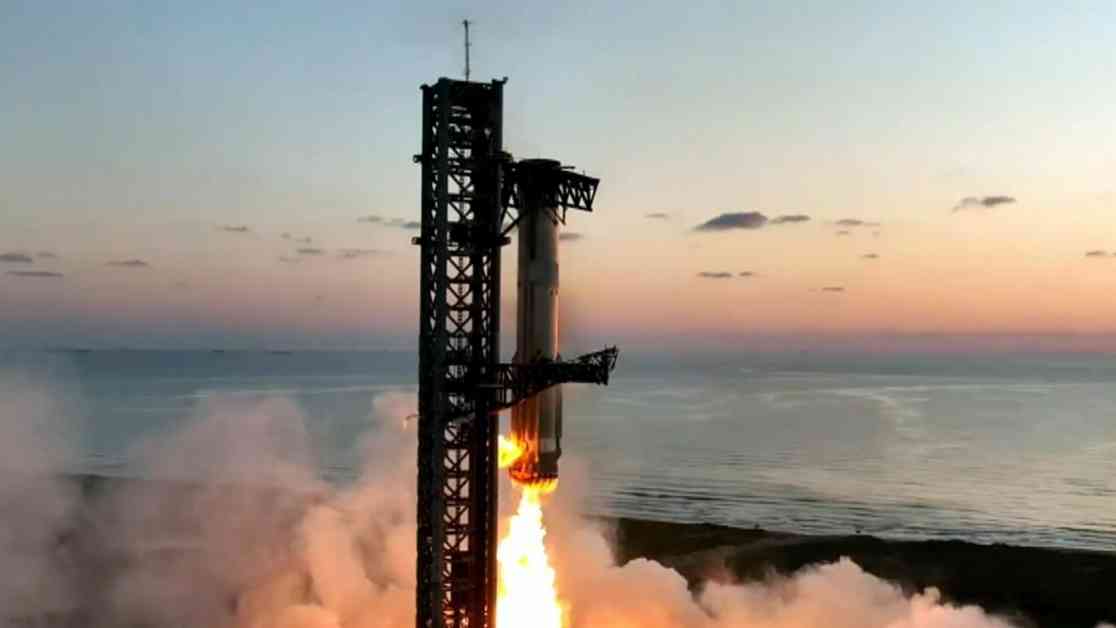A SpaceX booster rocket has made a successful return to Earth after the launch of the reusable Starship spacecraft. This was the first time that the rocket’s Super Heavy booster was brought back to the launch tower. The booster, which is 232 feet long, had three of its 33 Raptor engines re-ignited to slow its descent. After separating from the Starship second stage at 46 miles above the ground, the booster returned to Boca Chica in Texas. It was then captured and secured in place using what SpaceX calls “chopsticks,” which are large robotic arms mounted on a steel tower.
The successful capture of the booster was not guaranteed, as both the booster and the launch tower had to be in stable conditions. However, the maneuver was completed smoothly and controlled, marking a significant achievement for SpaceX. Previously, rockets of a similar size were not reusable and would crash back down to Earth.
SpaceX celebrated the achievement on social media, with Elon Musk calling it a historic moment in engineering. Journalists and space experts praised SpaceX for their innovation in bringing the booster back to land safely. The booster was still traveling at supersonic speed just before landing, showcasing the impressive deceleration involved in the process.
The Starship second stage, on the other hand, continued its journey into space and successfully landed in the Indian Ocean after its fifth test flight. The ultimate goal of the Starship and Super Heavy booster is to transport crew and cargo to the moon and beyond while being reusable. The Federal Aviation Administration (FAA) approved the launch earlier than expected, after SpaceX met all safety and environmental requirements.
Elon Musk has been critical of the FAA for delaying the approval of the license for the Starship 5 mission. Despite the challenges faced during testing, SpaceX views the Starship as the most powerful launch vehicle ever developed, capable of carrying heavy payloads. The company has been working on the Starship since 2017 and has made significant progress, with the successful completion of a full flight in June.
Overall, the successful return of the booster rocket and the Starship second stage marks a significant milestone for SpaceX and the future of space travel. The innovative technology and engineering behind these spacecraft are paving the way for more cost-effective and sustainable space exploration missions.










